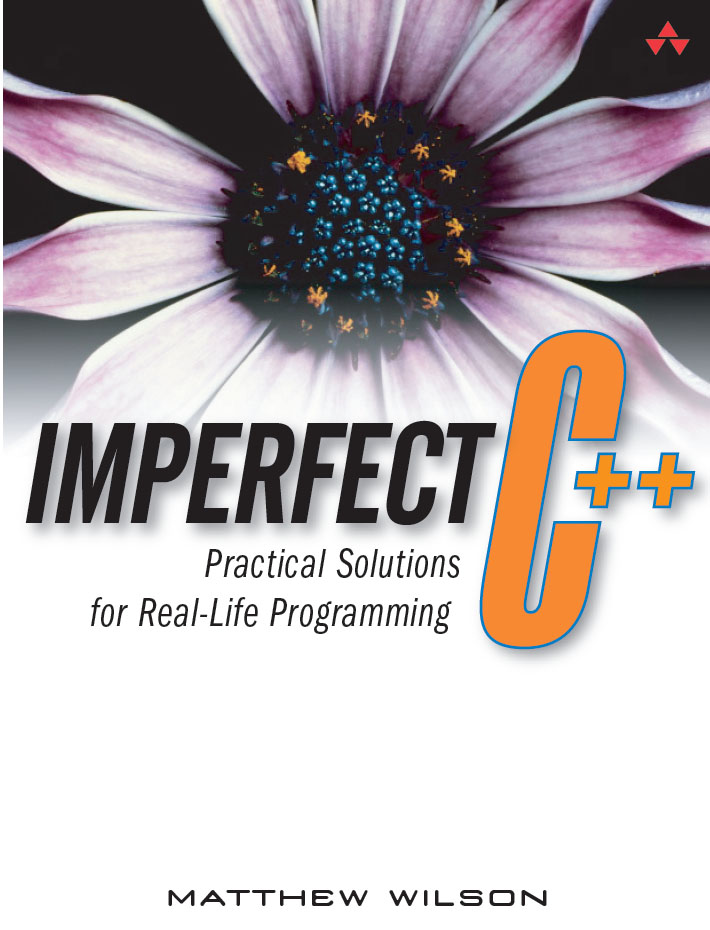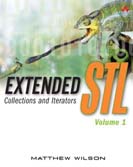Breaking Up The Monolith
Advanced C++ Design without Compromise
Glossary of Terms
Breaking Up The Monolith describes techniques for writing and
working with C/C++ libraries effectively, efficiently and with minimal
coupling.
This page contains a glossary of terms used within the book:
-
Abstraction Dissonance
-
The condition whereby client code is written using units of currency
that exist at a higher level of abstraction than those used by the libraries/APIs in terms of which
the client code is written.
-
Contract Enforcement
-
The act of verifying actual conditions against expected conditions, and reacting if they differ.
Contract enforcements can be undertaken at compile time and at runtime.
-
Contract Programming
-
The practice of specifying and, optionally, enforcing contracts
within the limitations imposed by a given language, operating environment, and design and development
constraints.
-
Correctness
-
The consistency of its implementation with its specification.
-
Defect
-
An aspect of a software system that may cause the system to depart from its
intended behaviour.
A defect is the potential for a fault.
If the defect is downstream from the design phase, then it will represent a
design violation, and may be policed using
contract programming
enforcements.
-
Enforcement Indivisibility, The (Rule)
-
Each enforcement should test a single condition of a contract.
-
Error
-
A wrong decision made during the development of a software system.
-
Failure
-
The condition whereby a software system does not provide the functionality prescribed
by its specification
Failures may be caused by failure in design or in coding.
-
Fault
-
The event of a software system behaving in conflict with its design.
A fault is the reification of a defect.
-
Header-Only
-
A C and/or C++ library all of whose elements are contained in include (header) files,
requiring no link-time dependencies.
-
Irrecoverability (Principle)
-
The principle of irrecoverability states:
It is not possible for a software system to operate in accordance with its design if
any component part of that system has violated its design.
A system executing in such a state must be stopped immediately.
-
Non-redundancy (Principle)
-
The principle of non-redundancy states*:
Under no circumstances shall the body of a routine ever test for the routine's
precondition.
-
Removability (Principle)
-
When applied to contract enforcement, the principle of removability states:
A contract enforcement should be removeable from correct software without changing
the (well-functioning) behaviour.
When applied to logging, the principle of removability states:
It must be possible to disable any log statement within correct software without changing
the (well-functioning) behaviour.
-
Shim (Concept)
-
An unbounded set of function overloads that generalise between (aspects of) conceptually related but
physically unrelated types. A shim is defined by four characteristics:
Name,
Intent,
Category
and
Ostensible Return Type.
-
Shim, Characteristic: Category
-
The intent, behaviour and constraints on the use of a shim. Shim categories can be fundamental (Attribute, Control, Conversion & Logical) or composite (combinations of two or more shim categories).
-
Shim, Characteristic: Intent
-
The common purpose of all functions constituting the shim.
-
Shim, Characteristic: Name
-
A fully-qualified name, consisting of namespace name + function name, that is shared by all function
overloads comprising the shim.
-
Shim, Characteristic: Ostensible Return Type
-
The type to which the return type of all overloads of a given shim are implicitly convertible.
-
Shim, Concept (composite): Access
-
-
Shim, Concept (composite): Action
-
-
Shim, Concept: Attribute
-
-
Shim, Concept: Conversion
-
-
Shim, Concept: Control
-
-
Shim, Concept: Logical
-
-
Shim, Degenerate
-
The degenerate form of a shim is the overload (or template) whose argument is equivalent to the ostensible return type of the shim; only attribute and access shims have degenerate forms.
In all cases, the degenerate form of a shim function does no allocation or conversion (other than cv-qualifier conversion).
-
Type Tunnel (Pattern)
-
A Type Tunnel describes the situation where a group of physically-unrelated types may be
tunneled through an extensible adaptation layer and presented in unified form to an underlying layer
for manipulation as a whole. It consists of the following:
-
a generic, extensible interface layer, used in client code, which can interact with heterogeneous types, and
-
a tunnel mechanism, which translates between the heterogeneous types expressed in the client
code into the type understood by
-
a concrete API layer, which manipulates a single concrete type.
Libraries that employ the Type Tunnel pattern include FastFormat,
Pantheios and VOLE. All three use
N-ary function templates as the interface layer. The first two use shims as the tunnel mechanism, whereas
VOLE uses conversion constructors.
-
Unit of Currency
-
The primary physical type with which client code represents a given conceptual type.
The primary physical type by which a component or API communicates a given conceptual type to its client code.
References
-
[Raymond04] Art of UNIX Programming, The , Eric Raymond, Addison-Wesley, 2004
-
[Meyer97] Object-Oriented Software Construction, Bertrand Meyer, Prentice-Hall Professional, 1997
-
[Kernighan&Pike99] Practice of Programming, The , Brian Kernighan and Rob Pike, Addison-Wesley, 1999
-
[Wilson04] Imperfect C++, Matthew Wilson, Addison-Wesley, 2004

